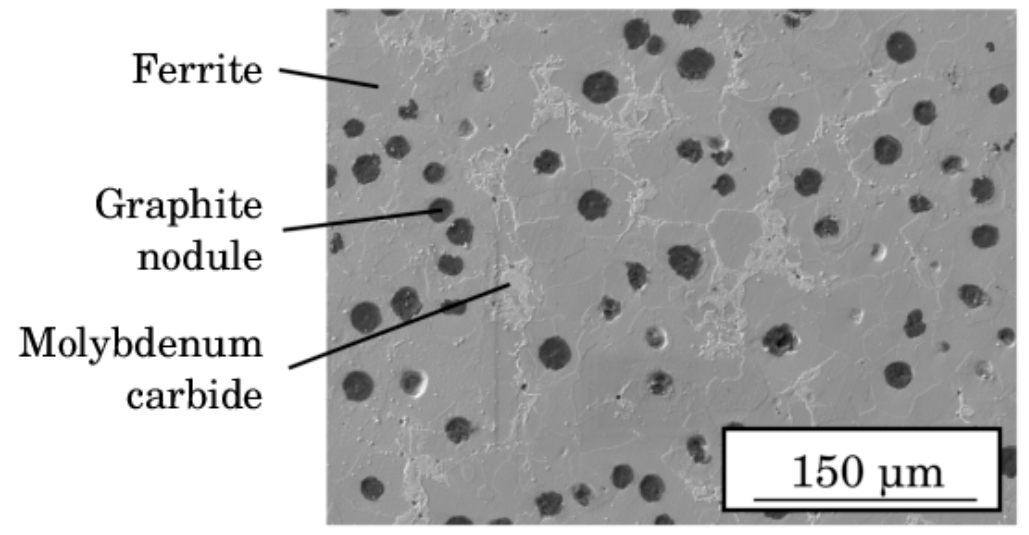Designing with Spheroidal Graphite Cast Iron (SGCI), also known as ductile iron, presents a unique set of opportunities and challenges for engineers and architects. Its combination of strength, ductility, and toughness makes it a versatile material suited for a wide range of applications. Here are some key insights and considerations for professionals looking to incorporate Spheroidal Graphite Cast Iron into their designs:

Understanding Material Properties
- Strength and Ductility: Spheroidal Graphite Cast Iron exhibits higher tensile and yield strength than gray cast iron, along with significant elongation (ductility). This makes it suitable for applications that require resistance to shock and impact.
- Weight Considerations: While Spheroidal Graphite Cast Iron is denser and heavier than materials like aluminum or plastic composites, it’s lighter than traditional cast iron, which can be an important consideration in certain design contexts.
- Corrosion Resistance: Spheroidal Graphite Cast Iron offers better corrosion resistance than standard cast iron but may require protective coatings or treatments for harsh environments.
- Thermal Behavior: It has good heat resistance and thermal conductivity, making it suitable for applications where temperature changes are a factor.
Design Flexibility and Constraints
- Castability: Spheroidal Graphite Cast Iron’s excellent castability allows for complex shapes and designs, which is particularly advantageous in custom and intricate architectural elements.
- Machinability: While it is harder and may wear down machining tools faster than gray cast iron, Spheroidal Graphite Cast Iron can still be machined effectively. This is a key factor in final finishing and detailing.
- Joining and Welding: Designers should be aware that welding Spheroidal Graphite Cast Iron requires specific techniques and pre-heating procedures to avoid cracking. Mechanical joining or adhesives can be alternatives.
- Size Limitations: The size of Spheroidal Graphite Cast Iron components can be limited by the casting process and foundry capabilities. It’s essential to consult with foundries early in the design process.
Applications in Engineering and Architecture
- Infrastructure: In civil engineering, Spheroidal Graphite Cast Iron is used for pipes, manhole covers, bridge components, and street furniture due to its strength and durability.
- Automotive and Machinery: Its impact resistance and strength make it ideal for automotive parts, heavy machinery, and industrial applications.
- Decorative Elements: Architects can leverage Spheroidal Graphite Cast Iron’s castability for decorative panels, facades, and artistic installations, offering both aesthetic appeal and structural integrity.
Sustainability and Environmental Considerations
- Recyclability: Spheroidal Graphite Cast Iron is highly recyclable, which is a critical factor in sustainable design practices.
- Lifecycle Analysis: Considering the entire lifecycle of the material, from production to recycling, is essential for environmentally conscious designs.
Collaborating with Manufacturers
- Early Engagement: Early collaboration with foundries and manufacturers can help in addressing design constraints and exploring innovative solutions.
- Custom Alloys: Working with manufacturers on custom Spheroidal Graphite Cast Iron alloys can optimize material properties for specific applications.
- Prototyping: Creating prototypes is a crucial step in assessing the feasibility and performance of the Spheroidal Graphite Cast Iron components in the actual application.
Conclusion
Designing with Spheroidal Graphite Cast Iron requires a deep understanding of its properties and capabilities. Its versatility makes it an attractive choice for a wide range of applications, from functional industrial components to artistic architectural elements. By considering factors such as strength, ductility, machinability, and sustainability, engineers and architects can effectively utilize Spheroidal Graphite Cast Iron in their designs, balancing aesthetic goals with structural requirements.
